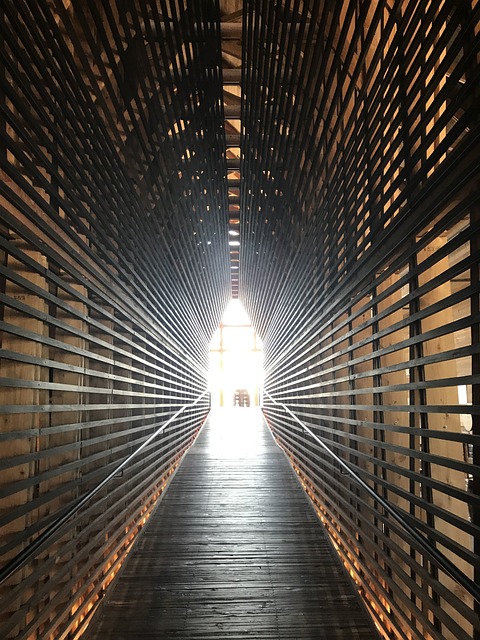Are you a whiskey enthusiast who is always seeking answers to the most intriguing questions about your favorite beverage? If so, we have an exciting revelation to quench your curiosity: the number of fifths in a whiskey barrel! Whether you’re a connoisseur or simply enjoy savoring a glass or two, understanding the inner workings of this magical elixir is sure to deepen your appreciation. So, fasten your seatbelts as we embark on a thrilling journey into the heart of every whiskey aficionado’s curiosity. Get ready to have your mind blown!
Contents
- The Significance of the Number of Fifths in a Whiskey Barrel
- Unraveling the Myth: Does the Number of Fifths Affect Whiskey Flavor?
- Exploring the Age-Old Tradition of Aging Whiskey in Barrels
- Understanding the Equation: How Many Fifths Fit in a Standard Whiskey Barrel?
- Unveiling the Impact: How Does the Number of Fifths Shape Whiskey Maturation?
- Discovering the Perfect Balance: Recommendations for Optimal Barrel Fillings
- Mastering the Art: Insights from Experts on Ideal Whiskey Barrel Capacities
- Frequently Asked Questions
- The Way Forward
The Significance of the Number of Fifths in a Whiskey Barrel
Understanding the number of fifths in a whiskey barrel is crucial for enthusiasts and distillers alike. The number of fifths refers to the amount of whiskey that can be stored in a barrel, and it plays a significant role in the aging process and flavor development of this beloved spirit.
Firstly, the number of fifths in a whiskey barrel determines its capacity, which directly impacts the maturation process. A larger barrel with a higher number of fifths allows for a slower aging process as there is more space for the whiskey to interact with the wood. This results in a smoother and more complex flavor profile due to the increased time the whiskey spends in contact with the oak, allowing it to absorb desirable compounds such as tannins and vanillin.
- Whiskey barrels with a higher number of fifths offer a larger surface area for the spirit to interact with the oak, contributing to enhanced flavor extraction.
- The number of fifths also influences evaporation or the “angel’s share.” A larger barrel has a higher ratio of whiskey to surface area, leading to less evaporation and potentially lower alcohol content over time.
- Furthermore, the number of fifths determines the optimal aging period. Different whiskey styles and regional preferences may vary, but generally, longer aging periods are desired to achieve enhanced complexity.
In conclusion, the number of fifths in a whiskey barrel is a vital factor that affects the aging process, flavor development, and overall quality of the whiskey. From the interaction with the oak to the rate of evaporation, understanding how this number influences the spirit’s journey helps both enthusiasts and distillers appreciate the nuances and craftsmanship behind each sip.

Unraveling the Myth: Does the Number of Fifths Affect Whiskey Flavor?
When it comes to whiskey, there are countless myths and beliefs surrounding its production and flavor. One such myth is the notion that the number of fifths in a bottle affects the taste of the whiskey. However, it’s time to unravel this misconception and separate fact from fiction.
Contrary to popular belief, the number of fifths in a bottle has no impact on the flavor of whiskey. The notion that a larger or smaller number of fifths can alter the taste is simply unfounded. Whiskey flavor is primarily determined by factors such as the type of grain used, the distillation process, aging techniques, and the influence of barrels during maturation.
Instead of focusing on the number of fifths, whiskey enthusiasts should pay attention to other crucial factors that contribute to its taste. For instance, the type of grain, be it corn, barley, rye, or wheat, plays a pivotal role in shaping the flavor profile. Furthermore, the distillation process, whether using pot stills or column stills, imparts distinct characteristics to the whiskey. The aging process, often in charred oak barrels, also adds complexity and depth to the final product. By exploring these key elements of whiskey production, enthusiasts can gain a deeper appreciation for the beverage and debunk the myth surrounding the number of fifths.

Exploring the Age-Old Tradition of Aging Whiskey in Barrels
Whiskey lovers around the world have always been fascinated by the age-old tradition of aging this beloved spirit in barrels. The art of barrel aging dates back centuries and has become an essential step in whiskey production. So, what makes this process so special? Let’s dive into the world of whiskey aging and uncover the magic that happens inside those wooden casks.
When whiskey is aged in barrels, it undergoes a remarkable transformation, thanks to the interaction between the spirit and the wood. The wood imparts unique flavors, aromas, and colors into the whiskey, making each batch a distinct experience for the senses. Here are some key aspects that make aging whiskey in barrels a truly captivating process:
- Flavor Development: Oak barrels enhance the flavors of whiskey by adding notes of vanilla, caramel, and spices. As the whiskey seeps into the wood, it absorbs compounds present in the charred interior, resulting in complex, rich flavors that develop over time.
- Maturation: The aging process allows the whiskey to mature and reach its full potential. During this time, chemical reactions occur within the barrel, harmonizing the different elements and creating a smooth, well-balanced spirit. Each year spent aging adds depth and character to the whiskey.
- Color Infusion: Whiskey owes its enticing amber hue to the aging process. The tannins present in the wood interact with the liquid, gradually imparting a warm golden color. The longer the whiskey ages, the deeper and more captivating its hue becomes.
- Vintage Variations: Whiskey aged in barrels from different regions or made of various types of wood can showcase unique characteristics and flavor profiles. These variations allow enthusiasts to explore a wide range of tastes, from the smoky nuances of American oak to the fruity undertones of European oak barrels.
It’s no wonder that the tradition of aging whiskey in barrels continues to be cherished by distillers and whiskey aficionados alike. The time-honored process bestows upon us a liquid work of art, patiently maturing in each barrel, waiting to delight our palates. So, raise your glass to the magnificent world of barrel-aged whiskey and savor the remarkable flavors crafted through centuries of expertise and tradition.

Understanding the Equation: How Many Fifths Fit in a Standard Whiskey Barrel?
Have you ever wondered how many fifths of whiskey can be stored in a standard whiskey barrel? Today, we’re here to break down the numbers and help you understand the equation behind this interesting concept. So, grab a glass of your favorite spirit and let’s dive in!
Firstly, it’s important to note that a standard whiskey barrel typically holds around 53 gallons of liquid. Now, let’s do some math. One gallon is equal to 128 fluid ounces, and a fifth of whiskey contains 25.6 ounces. By dividing the total capacity of the barrel by the size of a fifth, we can determine that approximately 2,070 fifths of whiskey can fit in a standard whiskey barrel.
It’s fascinating to uncover the storage capacity of these barrels and consider the vast amount of whiskey that can be contained within. Keep in mind that these numbers may vary depending on the shape and size of the barrel, as well as the specific measurements of a fifth. Nevertheless, next time you see a whiskey barrel, you’ll have a better understanding of the equation behind how many fifths it can accommodate – an impressive value that showcases the craftsmanship and dedication that goes into producing this beloved spirit.

Unveiling the Impact: How Does the Number of Fifths Shape Whiskey Maturation?
When it comes to whiskey maturation, one key factor that greatly influences its flavor profile is the number of fifths it has been aged in. The number of fifths refers to the number of times the whiskey has been transferred into a new barrel during the aging process. While this might seem like a small detail, it actually plays a significant role in shaping the final product.
First and foremost, the number of fifths affects the level of complexity in the whiskey. Each time the whiskey is transferred into a new barrel, it has the opportunity to extract different flavors from the wood, adding depth and nuance to the final product. With each additional fifth, the whiskey has the chance to interact with fresh wood, introducing unique characteristics and complexity that cannot be achieved through only one aging process.
To better understand the impact of the number of fifths on whiskey maturation, let’s take a look at some key points:
- Flavor Development: The more times a whiskey is transferred into a new barrel, the more flavors it can extract from the wood. This leads to a more intricate flavor profile with layers of notes such as vanilla, caramel, spice, and oak.
- Maturation Time: Each transfer into a new barrel extends the maturation process. While this may require additional time, it allows for a more refined and mature whiskey that has had ample time to interact with the wood and develop complex flavors.
- Consistency: With each transfer, the whiskey has the chance to equalize any inconsistencies in flavor, resulting in a more harmonious and balanced end product.
As whiskey enthusiasts and connoisseurs, understanding the impact of the number of fifths in whiskey maturation can deepen our appreciation for the craftsmanship behind each bottle. So next time you pour yourself a glass of whiskey, take a moment to savor the intricate flavors that have been carefully shaped by the number of fifths it has encountered throughout its maturation journey.

Discovering the Perfect Balance: Recommendations for Optimal Barrel Fillings
When it comes to aging spirits, finding the right barrel filling can make all the difference in taste and quality. Whether you are a distillery looking to enhance your product or an enthusiast seeking to perfect your home-aged concoctions, we’ve got some expert recommendations that will help you achieve the optimal balance and unlock stunning flavors.
Prioritize these key elements to ensure a successful barrel aging process:
- Quality over quantity: Choose premium spirits as the base for your barrel filling. The better the spirit you start with, the more complexity and character it will gain during aging.
- Consider wood types: Different types of wood, such as oak or cherry, impart distinct flavors. Experiment and find the wood that complements your spirit the best.
- Age with patience: While it may be tempting to rush the aging process, it’s crucial to allow sufficient time for the flavors to develop. Amazing transformations happen over time, so be patient and let nature work its magic.
It’s also important to maintain a few best practices once your barrels are filled:
- Control the environment: Keep your barrels in a temperature-controlled space to minimize evaporation and ensure consistent aging. Extreme temperature fluctuations can negatively impact the maturation process.
- Embrace experimentation: Don’t be afraid to try unconventional barrel fillings or aging techniques. Some of the most extraordinary flavors have been discovered through daring experimentation and pushing the boundaries of tradition.
By following these recommendations and infusing your own creative touch, you’ll be well on your way to uncovering the perfect balance between spirit and barrel, resulting in a truly remarkable drink worth savoring.

Mastering the Art: Insights from Experts on Ideal Whiskey Barrel Capacities
Expert Insights on Ideal Whiskey Barrel Capacities
When it comes to crafting the perfect whiskey, selecting the right barrel capacity is a crucial step that can make or break the final product. We reached out to industry experts to gain valuable insights into the ideal whiskey barrel capacities and how it impacts the aging process. Here’s what they had to say:
- Daniel Morrison, Master Distiller at a renowned distillery: “In my experience, smaller barrel capacities, such as 25 gallons, lend themselves well to achieving a faster maturation process. The increased contact between the whiskey and the wood allows for more flavor extraction, resulting in a rich and complex spirit in a shorter time frame.”
- Emma Peterson, Whiskey Enthusiast and Blogger: ”I find that medium-sized barrels, around 53 gallons, strike the perfect balance between flavor development and aging time. They allow the whiskey to slowly interact with the oak, smoothing out harsh edges and imparting desirable characteristics like vanilla and caramel notes.”
So, whether you opt for smaller or medium-sized barrels largely depends on your desired outcome. The key is finding the sweet spot where flavor profiles are enhanced while ensuring the whiskey achieves the desired level of maturity. Remember, experimenting with different barrel capacities can lead to exciting and unique flavor profiles that truly set apart your whiskey from the rest.
Frequently Asked Questions
Q: What is the number of fifths in a whiskey barrel?
A: The number of fifths in a whiskey barrel can vary depending on the size of the barrel, but typically, a standard 53-gallon barrel can hold around 180 fifths of whiskey.
Q: How does the size of the barrel affect the number of fifths it can hold?
A: The size of the barrel directly affects the number of fifths it can hold. Smaller barrels, such as those used in craft distilleries, usually hold fewer fifths compared to larger barrels used in traditional whiskey production.
Q: Why are barrels used to age whiskey?
A: Barrels play a crucial role in aging whiskey as they contribute to its flavor, aroma, and overall character. The wooden barrel allows the whiskey to interact with the oak, which imparts desirable flavors, smoothness, and complexity to the spirit.
Q: Are all whiskey barrels the same size?
A: No, whiskey barrels come in various sizes. However, the most commonly used standard size is the 53-gallon barrel, which is typically used by large distilleries.
Q: What is the origin of the whiskey barrel size?
A: The size of the 53-gallon whiskey barrel has its roots in the American whiskey industry. It evolved from the practice of using barrels in the transportation of goods during the early days of American history.
Q: How long is whiskey typically aged in barrels?
A: The aging process of whiskey can vary greatly depending on the type of whiskey being produced and the desired flavor profile. However, most whiskeys are aged for a minimum of two years, with many high-quality spirits being aged for much longer periods.
Q: Can a barrel be reused for aging whiskey?
A: Yes, many barrels are reused multiple times for aging whiskey. However, each subsequent use may yield different flavors due to the oak’s diminishing ability to impart flavors and changes made to the barrel during previous uses.
Q: How does the aging process affect the flavor of the whiskey?
A: During aging, whiskey interacts with the oak and undergoes chemical changes. These changes impart flavors such as vanilla, caramel, and spice, as well as mellow out harsher flavors and enhance overall complexity.
Q: Are there any regulations governing whiskey aging in barrels?
A: Yes, throughout the world, different regulations govern whiskey aging. In some countries, like Scotland, there are strict legal requirements on the minimum aging period for certain types of whiskey, while in others, like the United States, there are fewer regulations.
Q: Can the size of a whiskey barrel affect the aging process?
A: Yes, the size of the barrel can influence the aging process. Smaller barrels generally result in more rapid aging due to increased surface contact between the whiskey and the wood. This can lead to faster flavor extraction and maturation compared to larger barrels.
Q: Can the number of fifths in a barrel affect the flavor of the whiskey?
A: The number of fifths, or the volume of whiskey, in a barrel does not directly affect the flavor, but the amount of spirit in the barrel can impact the intensity of interactions with the wood. Consequently, it may influence the rate and extent at which flavors develop during the aging process.
Q: How important are barrels in the whiskey-making process?
A: Barrels are crucial in the whiskey-making process as they contribute significantly to the final product’s flavor, smoothness, and overall quality. The choice of barrel and the aging period can make a significant difference in the taste and character of the whiskey.
Q: Can other spirits, such as rum or bourbon, be aged in the same barrels?
A: Yes, barrels are often reused in the production of other spirits, like rum or bourbon. When used in subsequent aging, the barrels can impart unique flavor characteristics to the new spirit, influenced by the previous whiskey aging.
Q: What happens to whiskey barrels after their useful life?
A: Whiskey barrels that are no longer useful for aging whiskey can have various fates. Some are repurposed as planters, furniture, or decorative items. Others may be used in the production of different spirits or recycled into other wooden products.
The Way Forward
In conclusion, it’s fascinating to discover that a standard whiskey barrel holds around 25 fifths of liquor. Cheers to newfound knowledge!

